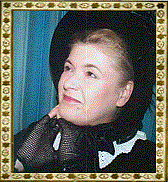
The Emancipation Memorial was unveiled for the 1876 centennial celebration in Lincoln Park, Washington, D.C. Archer Alexander was a slave on the Hickman farm in St, Charles. He warned Union soldiers that rebs were going to blow a bridge with them on it. He knew he’d be accused and so ran away to St. Louis where he was caught--and escaped again. He was lucky enough to be hired by Abigail Eliot, wife of William Greenleaf Eliot who was grandfather of poet T.S. Eliot and founder of Washington University. The Eliots kept Archer safe until the Emancipation Proclamation freed all slaves on January 1, 1863. In 1869, Eliot wanted the sculptor to use a real freeman in The Freedman’s Memorial which was paid for entirely by former slaves. The monument shows Lincoln reading the proclamation to a kneeling man. Eliot persuaded Thomas Ball to use as his model Archer, the last slave ever captured under the Fugitive Slave Act. |

More Stories from Civil War St. Louis |
That summer, St. Louis was quiet--much too quiet--with no hero’s welcome for us as it used to have. Rebel flags were flying all across town. Rebel officers recruited soldiers on street corners. The situation was grim. Our own Union soldiers had to drill with sticks because they had no rifles. Back east no one understood that out west we were already in a shooting war. |
The beginning of the war in St. Louis as seen by Jessie Benton Fremont, daughter of Missouri’s first senator, Senator Thomas Hart Benton, and wife of John Charles “Pathfinder” Fremont, first presidential candidate of the Republican party
|
|
 |
Revenge Execution of Innocent Rebel Soldiers, October 29, 1864 |
Union Captain James Wilson had a bitter feud with reb guerilla Timothy Reeves. Christmas Day of 1863, Wilson surprised Reeves’s guerillas celebrating Christmas with their families. The attack laid low thirty rebs including three guerilla wives. Union men burned Reeves’s home town of Doniphan. Reeves was in no mood for mercy when he singled out Wilson and six others from prisoners captured at Fort Davidson. Reeves executed all seven.
|